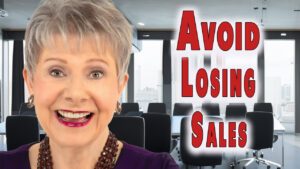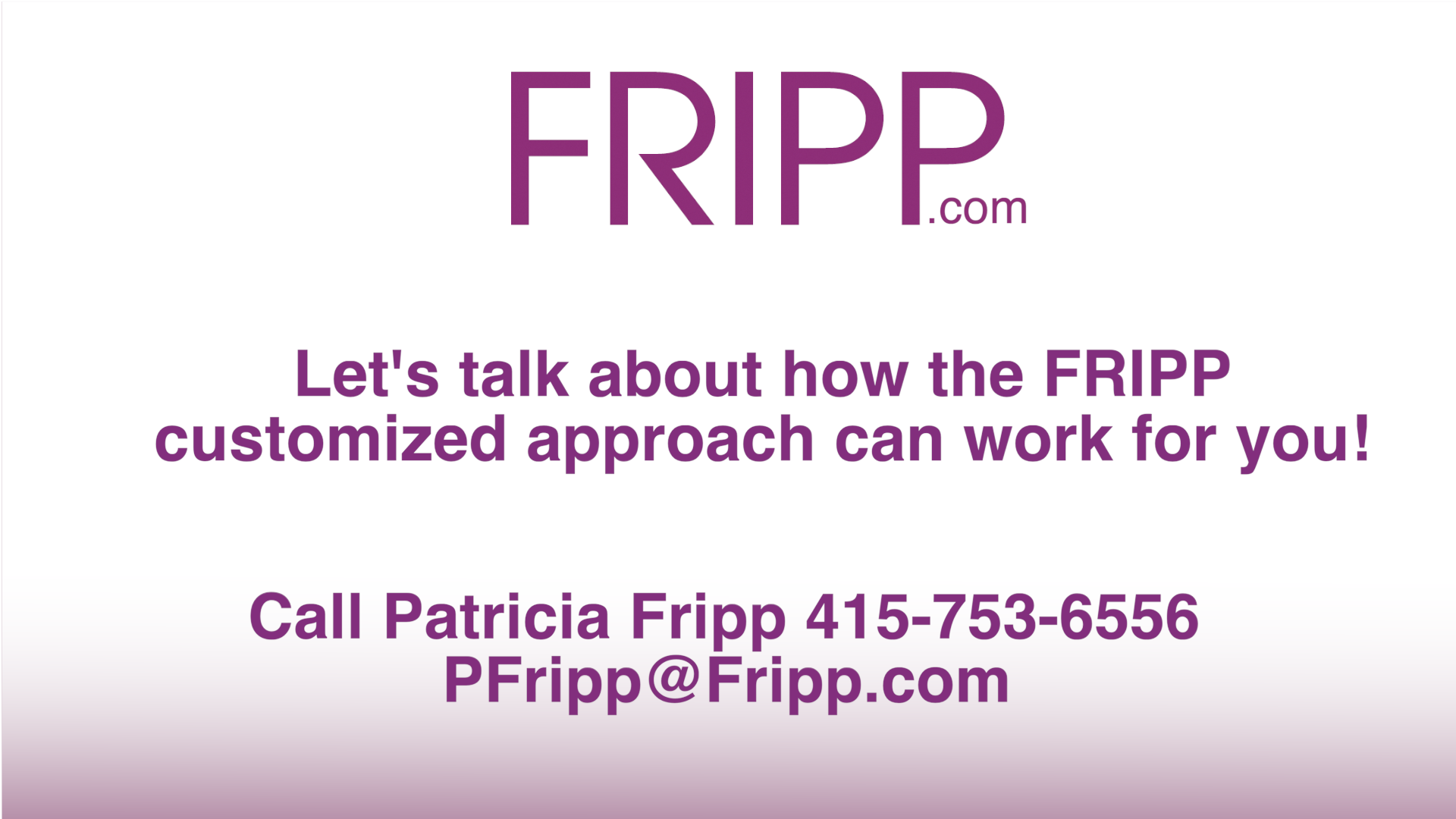Here are 12 Proven Fripp Suggestions
Sales professionals carry a unique responsibility. Every time they speak, they represent themselves, their team, and their entire organization. Whether they succeed or fail can come down to one factor—how well they present their message.
Even the most experienced sales professionals can benefit from expert coaching. Why? Because clear messaging, emotional connection, and persuasive structure are not optional—they are essential. These are the top 12 mistakes I see in the first coaching sessions with my clients. By the time we’re done, they know how to avoid them and win more business.
- Fuzzy Focus
If you can’t explain the objective of your sales interaction in one sentence, your message is too vague. Every conversation must be built around a clear, specific outcome. Can you answer this challenge from a busy executive: “You have ten minutes. In one sentence, how should I explain your value to my team?”

- No Clear Structure
When your presentation is disorganised, your prospects struggle to follow your ideas and remember your message. Build a simple outline based on your prospect’s interests, challenges, or opportunities. What will you say to make you more memorable? Reiterate your key ideas and share stories of satisfied clients who have faced similar situations.
- Talking Too Much, Listening Too Little
Sales is not a monologue. It’s a high-value conversation. Stop making speeches. Ask better questions. Listen deeply. Pause more. The best sales professionals master the art of drawing out insights through open-ended questions and thoughtful silence.
- Lack of Compelling Stories
We don’t buy facts. We buy the possible future you paint for them. Tell the success stories of satisfied clients. Build mental movies with vivid detail. A strong story makes you memorable, relatable, and credible.
- No Third-Party Endorsements
When selling, you can’t toot your own horn effectively; however, the words of your clients can. Use authentic client dialogue, case studies, and testimonials. When your client says, “Thanks to your solution, the results got me promoted,” you’ve made an emotional and intellectual connection.
- No Emotional Connection
Data alone won’t move decision-makers. Combine logic with emotion. Speak to their goals, challenges, and desires. Use “you-focused” language. Answer their unspoken question: “What will this look like if I say ‘Yes?’ Storytelling is your secret weapon.
- The Wrong Level of Abstraction
Tailor your message. Executives need the big picture. Mid-level managers want implementation details. Technical experts need facts, data, and proof. Don’t overwhelm or underwhelm—speak their language and priorities.
- Not Enough Pauses
A pause is powerful. It gives your prospect time to think, react, and respond. Great music has rests. So should great presentations. Don’t steamroll past the most critical moments.
- Filler Words & Distractions
Everything we do and say adds to or distracts from our message. Watch the “Hm… uh… okay?” Every distracting filler word weakens your authority. Rehearse with feedback. Record yourself. Become aware and then eliminate the verbal clutter.
- Weak Punch Words & Flat Language
Are you burying the most crucial word in your sentence? Don’t let your key message die at the end with a weak delivery. Replace vague language with action-packed phrases. Create $100 phrases that crystallise complex value into visual, repeatable language.
“We’re like a security guard. We keep the bad guys out, and let the good guys in.” “99% of the Fortune 500 do business with us. “We are large enough to satisfy all your needs. Small enough, you will always be a VIP customer with our president’s cell phone number.”
They are $100 phrases from my client’s presentations after I worked with them.
- Weak Openings and Forgettable Closings

The first 30 seconds and last 30 seconds of any presentation are the most important. Never open with your name or company history. Why not say, “Congratulations…” and mention what they are most proud of? Then do not sound the same as everyone else and thank them for their time. Instead, “Thank you for the opportunity to discuss how the ABC company may well be exactly what you are looking for. Rohit and Susan have been very generous with their time and information. They tell me you are most interested in…” After your review, call to action, and answer their questions, leave with your last words that linger. “Again, on behalf of the leadership and our associates, we appreciate the opportunity to discuss how we may be the solution you have been looking for. Remember, 157 profitable quarters.”
- Hiding Behind Technology
Don’t let visual aids do your selling. Use them to support, not to replace you and your message. If they said, “Just talk to us”, could you still make your case? The best presenters can think on their feet and engage in honest conversations. That’s what builds trust and wins business.
The Fripp Advantage
When you and your team stop making these 12 common mistakes, your results improve fast.
Just ask my client Michael Stryczek, CEO of AB&R®:
“Back in 2018, we invited you to help us with an important sales presentation, which we won. You’ll be excited to know it continues to reap dividends! Last year, we were awarded $1.6 million in business. We just received a $2.8 million order this year. Your coaching is awesome. What an ROI!”
Enjoy a FrippVT Sales Sampler
You Deserve That ROI Too
If your team’s sales presentations aren’t winning business, let’s change that. Talk to Patricia now. Or want a low-cost option? Fripp Virtual Training gives you 24/7 access to world-class coaching, proven strategies, engaging content, and built-in accountability.
“Your presentation skills program was a game-changer. The breakout sessions were especially impactful—engaging, insightful, and energizing. Our post-event survey results were some of the best we’ve seen. Thank you for your incredible support. We’re already looking forward to our next collaboration!” Jake Powers, Senior Director Marketing, Extreme Networks
Whether you’re a novice or seasoned professional, FrippVT is practical, proven, and ready when you are.
Start your complimentary trial today.
![]() If you and your sales team are struggling due to poor presentation skills, consider getting the help you need on your schedule. Enjoy our sampler of sales presentation advice.
If you and your sales team are struggling due to poor presentation skills, consider getting the help you need on your schedule. Enjoy our sampler of sales presentation advice.
Imagine a training program that gives you 24/7 access to one of the most in-demand executive speech coaches and sales presentation experts. Fripp Virtual Training is designed to be immediately engaging, making learning a more enjoyable experience. If you are a novice presenter or a seasoned professional, you will find the content both practical and relevant.
Sign up for your complimentary trial and discover how FrippVT can transform you and your team. FrippVT delivers high-calibre, comprehensive presentation and sales presentation skills training with built-in accountability.
“Our investment in Patricia’s presentation coaching quickly became one of the smartest decisions we’ve made for our technical experts. What started as support for high-stakes events turned into an essential part of our preparation process. Patricia isn’t just an outside coach—she’s truly part of our team. Her ability to help our executives and engineers communicate with clarity and confidence has elevated not only our public presentations and Executive Briefing Center sessions but also internal meetings and customer conversations. The best part? The rave reviews keep coming.” Greg Smith, Vice President, Product Marketing at Nutanix
Need help for you or your team on improving important conversations and presentations? The Fripp Customized Approach will work for you. Contact Fripp today!


I don’t recall identifying filler words as NON-WORDS. I like it. I attended a financial group last week and the CEO of the company and with an enormous background as an attorney needs the first 11 of your points. Unfortunately, I think he would have been better off if he did rely on PowerPoint. It took him 1 hour to present what he could have presented in 20 minutes if he took your suggestions — and he was the keynote speaker. He had some very important information intermingled with a lot of uninteresting facts and quite a few “non-words.”
Two points I would add to your list, if you don’t mind are:
Don’t overuse gestures and make sure that the gestures enhance the presentation. If you are not sure, videotape your presentation and watch it — without the sound. Are the gestures meaningful and do they add to your presentation? Can you identify the meaning of the gestures, e.g. go forth, big, tiny, etc.
Finally [and taking from your definition of filler words] do you have non-gestures? If you do, then keep your hands down to the side and don’t use them.
First, write your presentation and start with the conclusion first. Identify the call to action. Then work backwards to support your conclusion. And by the time you are finished, you should know how to begin with an attention getter. This way, you may have to reduce some of the verbiage, but perhaps from 35 minutes to 30 minutes rather than 1 hour to 30 minutes — if you begin writing the opening of your presentation.